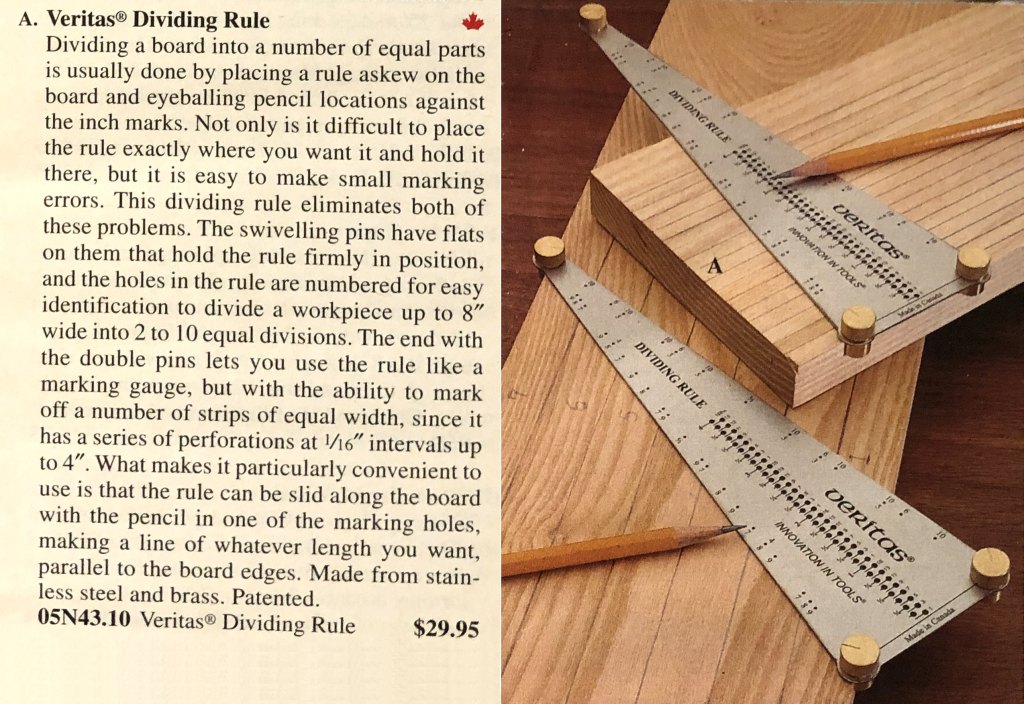While it seems like the Nicholson bench was popular, in all likelihood it was not the archetypal bench in Victorian Britain. Many of the benches found in woodworking workshops in open air museums seems to be more of an ad hoc nature, and in reality were probably built in-situ for whatever task they were required to perform. There is probably also some disparity between benches found in real settings and those in urban settings. It is quite challenging to find pictures of workshops during the Victorian period. There is some evidence to be found in carpenters literature of the period. In Forty Lessons in Carpentry Workshop Practice, published in 1889, Charles Mitchell of the Polytechnic Institute in London describes a bench which is not that dissimilar to a Nicholson-type bench.

In 1866 a book published in New York, “Our Workshop; being “A Practical Guide to the Amateur in The Art of Carpentry and Joinery”, described a rough type of bench. The book seems to anonymous, but uses Sterling, so is of British origin. The bench “consists of a strong rough frame, surmounted by a stout top, formed of 2-inch board. The height of the bench should be about 2 feet 6 inches, but this must be regulated to some extent by the stature of the workman.” The bench was about 5 feet long, 2 feet four inches wide.

“The screw-chops, C, are of great service for holding work which may require planing on the edge, such as a long board. The chops consist of a face board, C, which should be made of some hard wood, that is not liable to warp; mahogany is very good. Common benches are fitted with chops made of pine, which is generally the material of which the bench is itself constructed. The face-board is made to advance to the edge of the bench, or to recede therefrom , by a strong wooden screw, P, which works in a wooden nut, fixed to the underside of the bench. The face-board is guided by a square rail, r, which is secured thereto, the other end sliding in a suitable mortise, under the bench. The screw is moved by a round wooden bar, which passes through the head, P, the bar being an easy fit, to enable us to draw it through the head on either side as may be required; it is kept in its place by a head at each end.”
This bench is emblematic of those typically found in many carpenters shops. It is relatively difficult to classify the type of bench found in the Victorian era, but pictures from the Arts and Crafts Movement suggest that by the turn of the century at least benches found in established workshops were more of a Scandinavian design.
Due to the rise in tool catalogs, normally from re-sellers, it is usually possible to trace some of the impact of the types of workbenches being sold. In the Edwardian era, we have seen quite an influx of differing workbenches in catalogs. The same can not be said of the Victorian era. In the Melhuish & Sons (London) 1885 catalog there are only two benches shown. The first is a standard European-type bench with a front and tail vice. The second is a strange sort of bench, which the catalog suggests Melhuish & Sons “introduced in this country”. It has a sled-leg on the left side, and normal legs on the right. There is a shoulder vise in the front (with a miniscule capacity), and the end a classic tail vise. Made of solid beechwood, and of various lengths, these were the standard fare in the late 1800’s.


In all likelihood the lack of any real designs, and the adoption of German and Scandinavian-style benches likely had more to do with their utility, and the automation of woodworking in the Victorian era. By the end of the 19th century, the Industrial Revolution, and the invention of electricity ultimately changed the role of the workbench. With the introduction of machinery to take on the tedious work of preparing stock via sawing, jointing and planing (now often done before it reached the furniture maker), the workbench was likely relegated to tasks such as cutting dovetails, assembly, and fine-detail work. By 1850 there were 68 steam mills for sawing planks in London alone. By the mid 19th century, furniture makers obtained mouldings direct from moulding mills. Mechanizing woodworking likely meant that workbenches could be factory produced at a reasonable cost.




